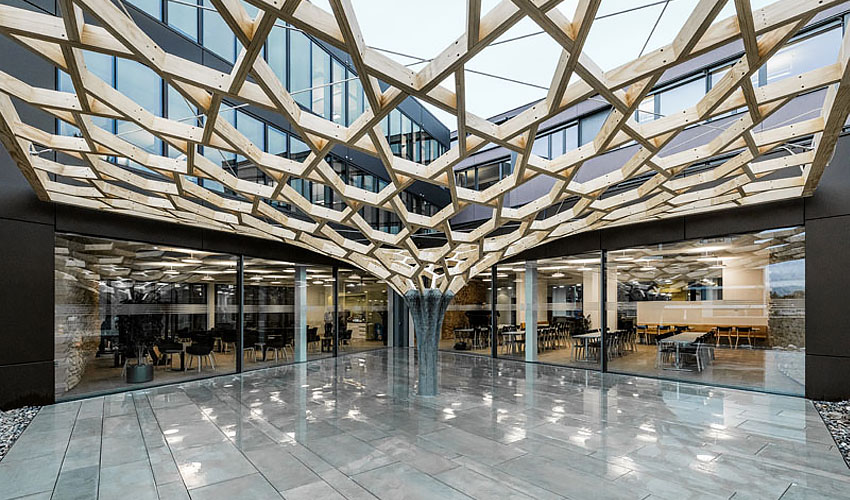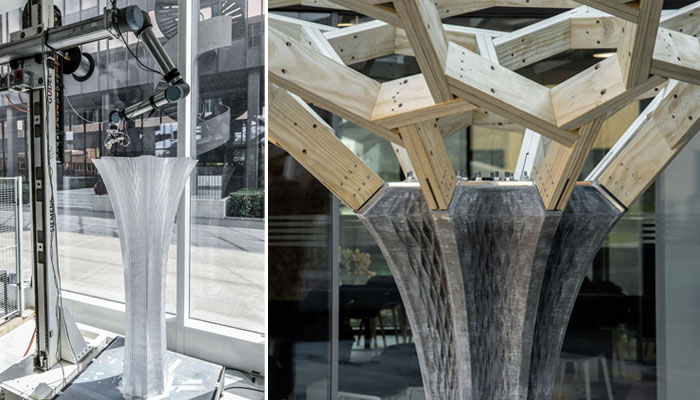The 3D printed Future Tree

The use of concrete in 3D printing is revolutionizing the construction industry. From houses to pedestrian bridges, additive manufacturing provides a great deal of design freedom that goes beyond the limits of the imaginable. In fact, it may well be the leading solution for structural construction in the future, thanks to its speed of production and low cost. To better understand the possibilities of concrete additive manufacturing, let’s take a closer look at the 3D printed Future Tree project, a canopy structure that extends over the courtyard of the Basler & Hofmann building, a consulting firm based in Switzerland.
We have previously covered some projects realized by ETH Zurich, such as Fast Complexity, for instance. The research group, led by Fabio Gramazio and Matthias Kohler, has been focusing on the development of computational and robotic tools for architecture. From complete installations to prototype buildings, they have inspired many industry actors to explore the capabilities of design in the digital age. In their latest project called Future Tree, the team wanted to combine cutting-edge design techniques with new materials and robotic additive manufacturing, all in one striking architectural project. How was the team able to build such an innovative and complex 3D printed structure?

Image credits: ETH Zurich
The design and development of the structure
The Future Tree consists of two elements. The first is the column that supports the structure; to build the column, the team used a six-axis robotic arm, so that the concrete could be produced on a large scale. The ultra-thin formwork, which comprises slightly over 2 meters in height, was built in one piece and filled with a fast hardening custom concrete. As for the design of the column, manufacturing data was generated from the parametric design model, allowing rapid iterations of physical prototypes. The team used the “Eggshell” technique – using the FDM technology, the process allows to design optimized novel structures and to minimize waste.
The second element is the stunning branch part, shaped as a tree, its form inspired the name “Future Tree”. The structure is made of acetylated pine wood, screws and tension cables. In total, the Tree’s frame is shaped by 380 robust elements. This frame can be made larger thanks to the specific arrangement of the parts. Each element has a unique geometry cut to size according to the data of the digital model. Supported by the concrete column, it is anchored to the building’s patio on two sides and cantilevered at the opposite corner.
One of the challenges faced by the team during the project was the shrinkage of the printing material when cooling. However, they addressed the problem by applying a diamond shaped micro-pattern to the formwork. This reduced the shrinkage stresses during the 3D printing process, as well as hardened the formwork. You can find more information about the project on their official website.
What do you think of this 3D printed Future Tree project? Let us know in a comment below or on our Facebook and Twitter pages! Sign up for our free weekly Newsletter, all the latest news in 3D printing straight to your inbox!








Very nice. But the small modules make for a lot of fabricating.
Have you tried hyperbolic Paraboloid straight member generation for an umbrella structure?